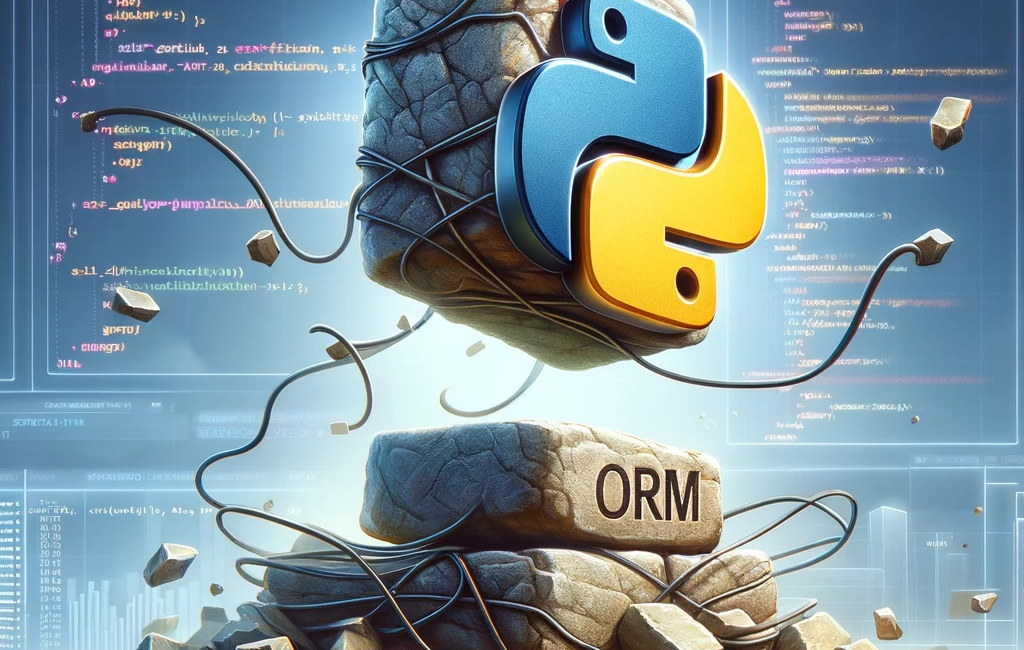Django, a high-level Python web framework established in 2003 and released in 2005, is renowned for its clean, pragmatic approach to web application development.
Emphasizing the "Don't Repeat Yourself" (DRY) principle, it promotes reusable code and modular development, standing out for its robustness, scalability, and a plethora of built-in features.
Its architecture, based on the Model-View-Template (MVT) pattern—a variant of the Model-View-Controller (MVC) architecture—ensures an efficient development process with a clear separation of concerns.
At the heart of Django's efficiency and user-friendliness is its Object-Relational Mapping (ORM) system.
ORM in web development acts as a bridge between relational databases and object-oriented programming languages.
It allows developers to interact with databases using the application's native language, such as Python, instead of raw SQL queries.
This abstraction simplifies database operations, automating the translation of data into objects and vice versa, perfectly aligning with the object-oriented nature of Python.
Django's ORM, particularly, transforms complex SQL intricacies into intuitive Pythonic code, making database interactions more straightforward and reducing the risk of errors.
Django’s ORM is not merely a feature but a core component that elevates the web development process, enhancing speed, security, and scalability in database interactions.
It is designed to be database-agnostic, smoothly working with various systems like PostgreSQL, MySQL, SQLite, and Oracle, which is vital for evolving or scaling projects. Additionally, its migration system adeptly manages changes in the database schema, maintaining controlled and versioned alterations.
Django, with its powerful ORM, thus emerges as an ideal choice for developers aiming to create robust web applications with efficient and effective data handling capabilities.
Understanding Django's ORM
Django's Object-Relational Mapping (ORM) system is a critical component that facilitates the interaction between the web application and the database in a seamless and intuitive manner.
Essentially, the ORM in Django converts classes in Python (models) into database tables and vice versa.
This conversion enables developers to interact with the database through Python objects rather than writing SQL queries.
For instance, consider a Python class defined in Django:
from django.db import models
class Article(models.Model):
title = models.CharField(max_length=100)
content = models.TextField()
published_date = models.DateTimeField(auto_now_add=True)
In this example, Article is a Django model representing an article in a blog application.
Each attribute of the class (title, content, published_date) corresponds to a field in the database.
Django ORM takes care of creating the necessary SQL commands to create a table for this model in the database.
Comparison with Traditional Database Query Methods
Traditionally, interacting with a database requires writing SQL queries.
For instance, to fetch records from a table, you would write a query like SELECT * FROM articles;.
This approach requires knowledge of SQL syntax and careful handling to prevent issues like SQL injection.
In contrast, Django's ORM allows you to perform the same operation using Python code:
articles = Article.objects.all()
This line of code retrieves all records from the articles table without directly writing any SQL.
The ORM translates this Python code into the appropriate SQL query behind the scenes.
Key Features and Advantages of Using Django’s ORM
Abstraction of Database Operations: The ORM abstracts complex SQL queries, enabling developers to write database interactions in Python. This abstraction reduces the learning curve and minimizes errors related to direct SQL handling.
Database Agnosticism: Django's ORM works with various relational databases like PostgreSQL, MySQL, SQLite, and Oracle. This flexibility allows for easy switching between different databases without changing the Python code.
Security: ORM provides a layer of protection against SQL injection attacks by sanitizing inputs automatically.
Efficiency in Development: It speeds up the development process as developers can focus on application logic rather than database syntax.
Scalability and Maintainability: ORM supports complex queries and relationships, which are essential for large-scale applications. It also makes the code more readable and maintainable.
Migrations Management: Django ORM comes with a migration system that manages changes in the database schema. This feature is crucial for maintaining the integrity and versioning of the database structure over time.
This article is for paid members only
To continue reading this article, upgrade your account to get full access.
Subscribe NowAlready have an account? Sign In

